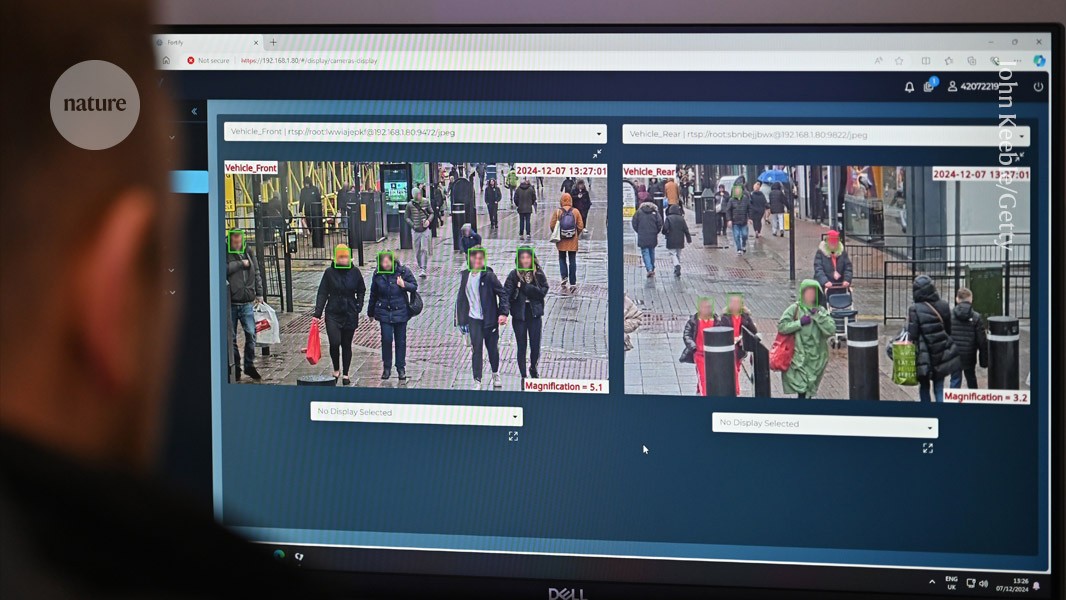Wake up call for AI: computer-vision research increasingly used for surveillance

One analysis suggests that 90% of studies in the field involve data relating to humans

Advances in computer-vision AI have led to more advanced facial-recognition tools that can be used to identify and track people. Credit: John Keeble/Getty
Imaging research in the popular field of computer vision almost always involves analysing humans and their environments, and most of the subsequent patents can be used in surveillance technologies, a study has found.
Computer-vision research involves developing algorithms to extract information from images and videos. It can be used to spot cancerous cells, classify animal species or in robot vision. But much of the time, the technologies are used to identify and track people, suggests the study published in Nature on 25 June1.
Computer scientists need to “wake up” and consider the moral implications of their work, says Yves Moreau, a computational biologist at the Catholic University of Leuven in Belgium, who studies the ethics of human data.

Source: Ref. 1
Human-surveillance technologies have advanced in the past few years with the rapid development of artificial intelligence (AI) and imaging capabilities. The technologies can recognize humans and their behaviour, for instance, through face or gait recognition and monitoring for certain actions.
Police forces and governments say that AI-powered surveillance allows them to better protect the public. But critics say that the systems are prone to error, disproportionately affect minority populations and can be used to suppress protest.
Imaging humans
The analysis assessed 19,000 computer-vision papers published between 1990 and 2020 at the leading Conference on Computer Vision and Pattern Recognition, as well as 23,000 patents that cited them. The researchers looked in depth at a random sample of 100 papers and 100 patents and found that 90% of the studies and 86% of the patents that cited those papers involved data relating to imaging humans and their spaces. Just 1% of the papers and 1% of the patents were designed to extract only non-human data.
And the trend has increased. In a wider analysis the researchers searched all the patents for a list of keywords linked to surveillance, such as ‘iris’, ‘criminal’ and ‘facial recognition’. They found that in the 2010s, 78% of computer-vision papers that led to patents produced ones related to surveillance, compared with 53% in the 1990s (see ‘Surveillance-enabling research’). Almost “the entire field is working on faces and gaits, on detecting people in images, and nobody seems to be saying, ‘wait what are we doing here?’” says Moreau.
Although many have assumed that there was a pipeline from computer-vision research to surveillance, that is “very different than having actual empirical evidence”, says Sandra Wachter, who studies technology and regulation at the University of Oxford, UK.
Login or create a free account to read this content
Gain free access to this article, as well as selected content from this journal and more on nature.com
or
Sign in or create an accountdoi: https://doi.org/10.1038/d41586-025-01745-1
Read the related News & Views: Computer-vision research is hiding its role in creating ‘Big Brother’ technologies
This story originally appeared on: Nature - Author:Elizabeth Gibney

















